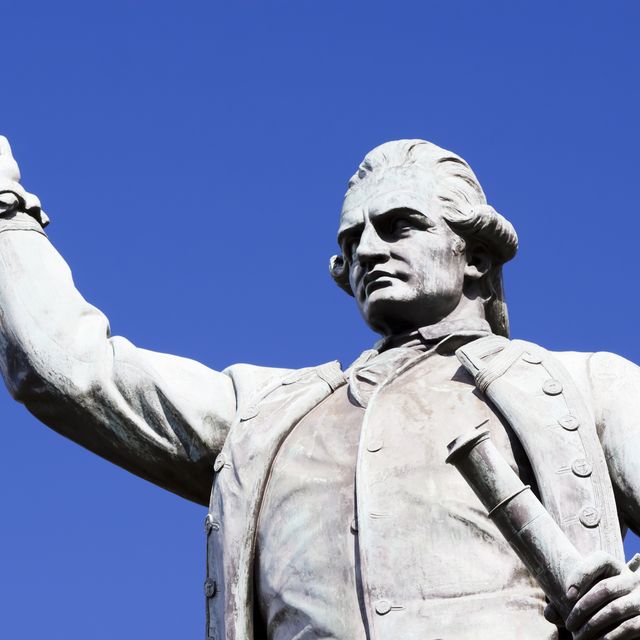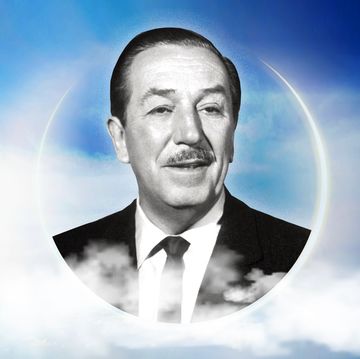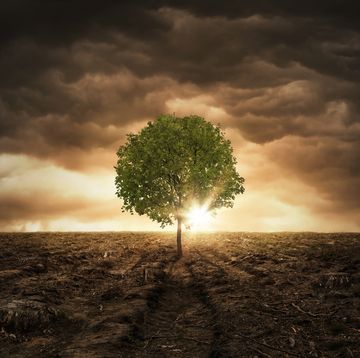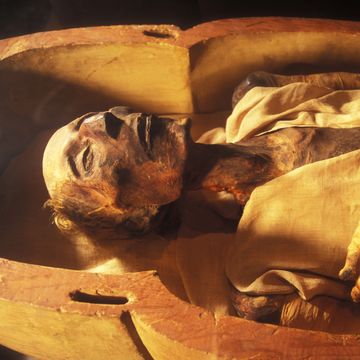- Shells from Captain James Cook’s final voyage were thought lost, but it turns out that a lecturer had pulled them from a dumpster 40 years ago.
- The collection, with roughly 200 specimens from the 18th century, will return to museum display.
- The collection includes a now-extinct species and finds from across the globe.
Shells scavenged during Captain James Cook’s third and final Pacific voyage in the 18th century were a critical part of a prized British collection. It was painstakingly amassed by a collector and passed through generations, often going on display at museums. But then the lot was thrown into a dumpster during a routine university office cleaning. Nobody had seen the collection for four decades, believing it was lost forever.
Well, it turns out that the shells were rummaged from the dumpster in the 1980s and have now been donated to English Heritage, where they join a lone giant clam shell remaining from the original group.
The tumultuous journey of the shells—matching the wild third voyage that saw Cook killed in a dispute with locals while on the Hawaiian Islands—was only made possible by British collector Bridget Atkinson. In the late 1700s and early 1800s Atkinson relied on her sons and other contacts to gather over 1,200 specific shells from around the world, including several linked to Cook’s third voyage.
Her collection passed to John Clayton, her grandson, but was then sold as part of the Clayton estate in 1930, with 200 of the shells—including those with Cook tie-ins—going on display at Chesters Roman Fort and Museum in Northumberland. From there, the shells went on loan to the zoology department of Armstrong College, which is now Newcastle University.
That’s where the dumpster rolls in. During an office cleaning, the shell collection hit the bin, but lecturer John Buchanan saw the shells in the trash and pulled them out.
“He rescued the collection as he believed in conservation, and the shells remained in our family home for 35 years,” the Buchanan family writes in a letter, provided in a statement. “Following the death of our mother, we discovered that the shells were part of the Clayton Collection. We were delighted to return the collection to English Heritage for future generations to enjoy.”
The Buchanan family donated the shells to English Heritage, allowing the collection to reunite with a giant clam shell previously believed to be the only surviving piece of the original group. The entire collection makes a return to the Chesters Roman Fort and Museum in Northumberland, hitting public display for the first time in more than 100 years.
Among the collection, there’s a thorny oyster, a sunburst star turban, the giant clam, a chambered nautilus, and the Astraea heliotropium that Atkinson asked Cook’s armorer George Dixon to collect during Cook’s third voyage on HMS Resolution. The collection also includes the now-extinct Distorsio cancellina—a shell that could have sold for thousands of pounds in 18th century Britain during the “golden age of shell collecting,” Tom White, principal curator of non-insect invertebrates at the Natural History Museum, said in a statement.
Atkinson was known to collect shells for their scientific and geographical interest, rather than aesthetics. He collection also highlights Britain’s role in global trade, as she never left Britain in search of her shells, instead asking those on journeys to bring back special finds.
“We’ve always known about Bridget Atkinson’s collection but had believed it completely lost,” Frances McIntosh, English Heritage’s collections curator for Hadrian’s Wall and the North East, said in a statement. “To discover that the shells have not only survived but been kept safe and loved all this time is nothing short of a miracle.”
Tim Newcomb is a journalist based in the Pacific Northwest. He covers stadiums, sneakers, gear, infrastructure, and more for a variety of publications, including Popular Mechanics. His favorite interviews have included sit-downs with Roger Federer in Switzerland, Kobe Bryant in Los Angeles, and Tinker Hatfield in Portland.













